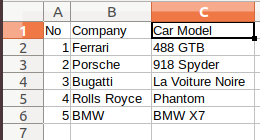
You can then write the data to a database or to a data warehouse.

You can also write it to delimited text files, such as in comma-separated value (CSV) format, or columnar file formats such as Optimized Row Columnar (ORC) format. You can use either of these format types for long-term storage in Amazon S3. On the other hand, JSON files can have much more complex structures than CSV files, so a direct conversion is not always possible and will require us to rework our structure of the file concerned.Storing the transformed files in S3 provides the additional benefit of being able to query this data using Amazon Athena or Amazon Redshift Spectrum. SummaryĪs we have seen, it may be easy to convert a Json file to a CSV file. Of course it’s possible to get all the JSON file data. To retrieve the header we need to use the keys() function which allows us to get the keys of each “ Name” element of our JSON file. We were able to export the different names of the Pokémon in the CSV. Here is an example with the pokedex.json file :Ĭsvwriter.writerow(data.keys()) To read a JSON file we can use the read_json function. Indeed a lot of python API returns as a result of JSON and with pandas it is very easy to exploit this data directly. Pandas is a python library that allows to easily manipulate data to be analyzed. Use the json module to read the JSON file.Use the pandas library and its read_json function.The first step is to load the json file into a python object. We will see at the end of this tutorial how to convert this type of file to csv and see how to do it in python. This file represents the pokemons as well as the characteristics associated with each one of them, if you wish to recover the complete list of the Pokedex, you will find it at this address :


 0 kommentar(er)
0 kommentar(er)
